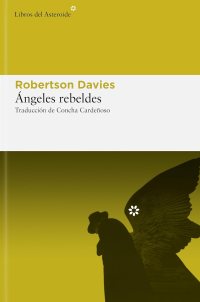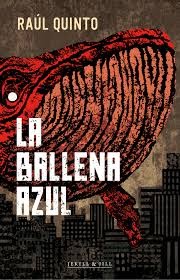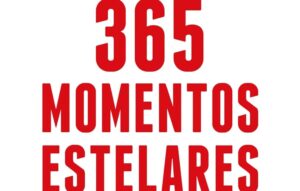
Review of the book “Rebel Angels”, by Robertson Davies
Review/Opinion:
The University of Saint John and the Holy Spirit, dormant in its absorbing academic life, is revolutionized with the return of the brilliant and evil Professor Parlabane to its Gothic walls and with the complicated legacy that the university has just received from Arthur Cornish, one of the most important Canadian art collectors of the 20th century. Suspicions among the executors of Cornish’s will – Professors Hollier, McVarish and Darcourt – increase when an unpublished manuscript by Rabelais is discovered among the objects of the legacy. The greed that the precious manuscript will unleash will reveal the true character of each of the characters in the novel.
“Rebel Angels” marks the beginning of the Cornish Trilogy, a literary series masterfully conceived by acclaimed Canadian author Robertson Davies. First published in 1981, this engaging and complex novel can be enjoyed both as a stand-alone work and as part of a larger set. With an elegant narrative, vivid characters and a deep exploration of themes such as art, history and redemption, “Rebel Angels” is a masterpiece that will delight lovers of good literature.
This novel, the next that Davies would write after the Deptford Trilogy, opens the Cornish Trilogy: a series of three novels united by the figure of Francis Cornish, although designed to be read independently.
The plot of “Rebel Angels” revolves around the figure of Francis Cornish, an enigmatic and talented man who becomes the central focus of the story. Through a skillfully constructed narrative structure, Davies presents us with Cornish life through different perspectives and moments in time. From his childhood to his success as an art historian, the author weaves a fascinating story that gradually reveals the secrets and motivations that drive this intriguing character.
One of the most notable strengths of this novel is Davies’s ability to bring characters to life. Each individual featured in “Rebel Angels” is meticulously developed, with distinctive characteristics and a complexity that makes them realistic and memorable. Francis Cornish himself is a fascinating protagonist, and as his life and his interactions with the other characters unfold, the reader becomes immersed in his world and the dilemmas he faces.
Davies’s prose is elegant and captivating. His narrative style is rich in detail, allowing the reader to immerse themselves in the settings and atmospheres created by the author. Furthermore, his deep knowledge of art and history is reflected in the plot, providing an additional layer of richness and depth to the novel. Davies uses art as a medium to explore universal themes such as beauty, creativity and the search for meaning in life.
Another highlight of “Rogue Angels” is the way Davies plays with time and narrative. Through flashbacks and time jumps, the author constructs a narrative puzzle that keeps the reader intrigued and eager to discover the truth behind the life of Francis Cornish. This complex narrative structure is a testament to Davies’ literary genius and his ability to maintain suspense and intrigue throughout the story.
In addition to its captivating plot and well-developed characters, “Rebel Angels” also explores deep and universal themes. Redemption, identity, and the search for meaning are recurring themes in the novel. Davies examines human nature and the motivations that drive people through the actions and dilemmas of his characters. As the story unfolds, questions are raised about morality, art, and the importance of authenticity in life.
Robertson Davies (1913-1995) is one of the most important Canadian authors. He published eleven novels, organized in trilogies: the Salterton Trilogy: At the Mercy of the Tempest, Yeast of Malice and A Mixture of Infirmities; the Deptford Trilogy: The Fifth in Discord, Manticore and The World of Wonders; the Cornish Trilogy: Rebel Angels, That Which Roots in the Bone and The Lyre of Orpheus; and the unfinished Toronto Trilogy, to which Murder and Souls in Sorrow and A Cunning Man belong. He also highlights the short story anthology Holiday Spirit. Ghost stories.
1. **Setting at the University of Toronto:** The novel takes place in the academic environment of the University of Toronto, where the main characters, including professors and students, become involved in a series of mysterious and supernatural events.
2. **Exploration of religion and spirituality:** Davies examines themes related to religion and spirituality throughout the novel, especially through the character of Professor Simon Darcourt, a skeptical academic who finds himself in the middle of a conflict between faith and reason.
3. **The mystery of the heretical manuscript:** The plot revolves around an ancient heretical manuscript that is discovered by accident in the university library. This manuscript triggers a series of extraordinary events that affect the main characters and force them to confront their deepest beliefs and convictions.
4. **Complex, multidimensional characters:** Davies creates a variety of complex, multidimensional characters, each with their own motivations, secrets, and moral dilemmas. From the enigmatic Professor Darcourt to the ambitious student Malachy, each character contributes to the development of the plot and the central conflict of the novel.
5. **Interaction between the mundane and the supernatural:** “Rebel Angels” delves into the world of the supernatural and the mysterious, but also explores how these elements affect and interact with the characters’ daily lives. This intersection between the mundane and the supernatural adds depth and suspense to the story, keeping the reader intrigued until the end.
These points highlight the most significant aspects of Robertson Davies’ “Rebel Angels,” a novel that combines mystery, intrigue, and the exploration of religious and philosophical themes in the context of an academic university.
Source: https://algunoslibrosbuenos.com/angeles-rebeldes


